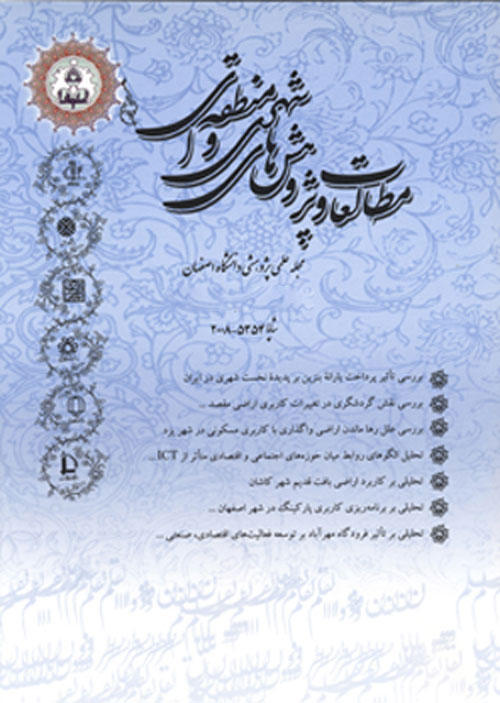Innovation and presentation of RALSPI model: a new method for evaluating alternatives and assessment of development level of settlements
In this paper، Ranking Alternatives by Limiting Substitution Possibilities of Indicators (RALSPI) method is proposed as a Multiple Criteria Decision Making (MCDM) method. Many MCDM methods have been developed over the years، but little is known about their shortcomings on similar problems. This study explores the main faults of some of the classical MCDM methods including SAW، TOPSIS، AHP، LINMAP، Numerical Taxonomy and Morris. The rationale for such selection has been that most of these are among the most popular and widely used methods in regional studies of classifying the development level of settlements، and each method reflects a different approach to solve MCDM problems. The RALSPI method resolves significant shortcomings of these methods. Theoretical bases: The typical MCDM problem is concerned with the task of ranking a finite number of decision alternatives، each of which is explicitly described in terms of different characteristics (also often called attributes، decision criteria، or objectives) which have to be taken into account simultaneously. MCDM plays a critical role in many real-life problems; it is hard to accept an MCDM method as being accurate all the time (Wang and Triantaphyllou، 2008). Several methods have been proposed for solving MCDM problems. The major criticism of MCDM methods is that different techniques may yield different results when applied to the same problem، apparently under the same assumptions and by a single DM (Zanakis et al.، 1998). Voogd (1983) found that، at least 40% of the time، each technique produced a different result from any other technique. Practitioners seem to prefer simple and transparent methods (Hobbs et al.، 1992). According to Hobbs et al. (1992) a good experiment should satisfy the following conditions: Compare methods that are widely used، represent divergent philosophies of decision making or claimed to represent important methodological improvements.
The efficiency of a method is not merely a function of the theory supporting it or how rigorous it is mathematically speaking. The other aspects which are also very important، relate to its ease of using، user understanding and faith in the results، and method reliability (Hobbs et al.، 1992). This section presents a new systematic MCDM approach، RALSPI، for evaluating and ranking alternatives. In fact، the RALSPI is a systematic method for decision problems with many criteria and alternatives. The algorithm for the proposed approach will be developed in eight steps. In this method، decisional process is decomposed into a hierarchy of criteria clusters، criteria، and alternatives. The RALSPI procedure is as follows: (In the RALSPI method، the decision matrix and the weight vector w are given as crisp values a priori.


